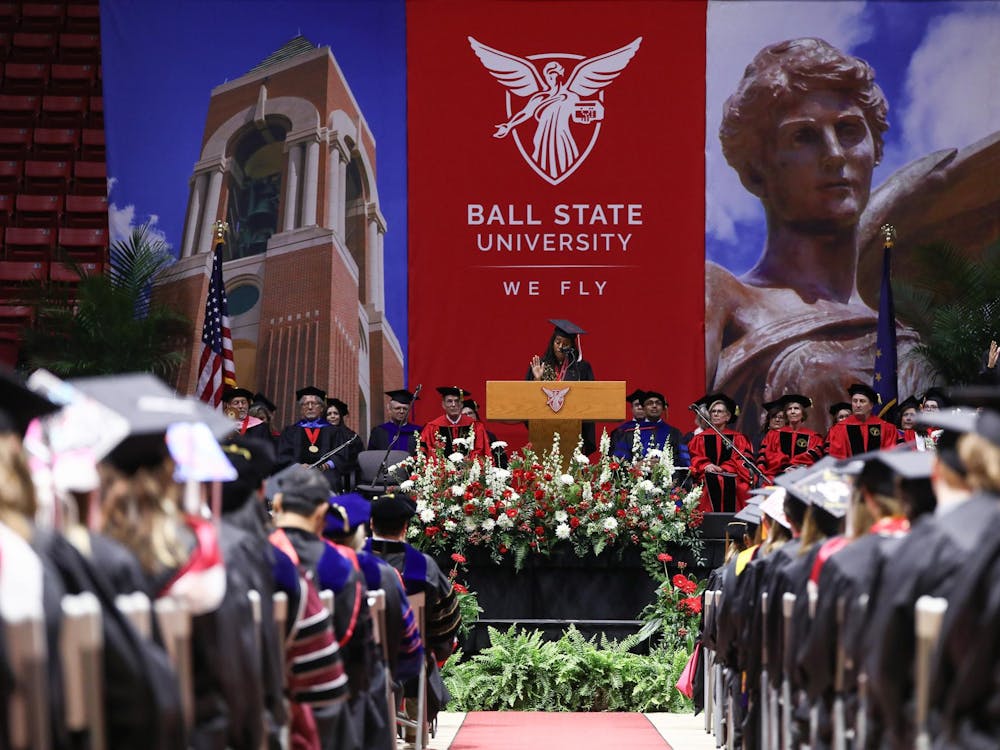While the geothermal project at Ball State is one of the nation's major efforts in going green, the sustainability effort is doing more than eventually providing faculty and students with clean energy.
The project is also giving the university opportunities for research and the ability to compile groundbreaking data.
When thinking of the best possible place for geothermal energy, people may turn to Yellowstone National Park or Iceland. However, Klaus Neumann, associate professor of geological sciences, said Muncie is a prime location for a specific type of geothermal energy.
"After drilling wells and measuring how much it takes to move the water, the university decided it was quick enough for the university's energy demand," Neumann said. "We don't need a special setting for a system like this because our ground is suitable for geothermal energy."
Monitoring the project gives the geology team a chance to gather information to show federal and state agencies, he said.
"We can monitor the performance of the system and the impact of the system while also looking at groundwater flow and chemistry," Neumann said. "As for the Department of Geology, it is a recourse for students because so far it is a great field laboratory on campus."
Neumann said he and a team of geologists locate wells and work with the planning crews while monitoring the overall project. Eight wells have been established, he said, with five more coming in the near future.
While only in the first phase of the geothermal project, once the project is completed all 45 buildings on campus will receive energy from it, eliminating two coal-fire burners at the Central Chilling Plant.
The plant has two additional coal-fire boilers, which will be shut down after Phase Two. However, the seven natural gas boilers will be kept as a backup energy source for the thousands of students living on campus.
The project will eliminate 85,000 metric tons of carbon dioxide emissions, said Robert Koester, director of Center for Energy Research.
He said once the system is in operation, it will be an energy management system as well as an energy supply system.
Koester, who is part of the Council on the Environment, has supported this project from beginning. It not only fits with President Jo Ann Gora's signing of the climate commitment to become a climate-neutral campus; it also allows for research and evaluations, he said.
"They're a couple different types of technology to use for the project, and we can see which is more efficient," Koester said. "The university can share this information with the world, which it should make a more cost effective and a research platform."
The Ball State Energy Action Team, a group of students from different fields that work to promote environmental awareness, hopes the university can honor its commitment to be a sustainable campus and reduce energy use.
Becca Staley, member of the BEAT, said Ball State is making a huge effort to reduce the carbon footprint as well as setting an example for other institutions.
"It's nice to see that even in the economic downturn that the university is still committed to doing positive things for the environment, which is reassuring to students," she said.
With Ball State's geothermal system, the crews are using existing and new piping to move water to the various buildings connected to the system, said Jim Lowe, director of Engineering, Construction, and Operations.
Lowe said the new heat-and-chiller pump, the heart of the project, came to campus last week.
The pump will be housed in a new building, on the north side of campus near the Johnson Complex, which should be finished in about three weeks, he said.
Once connected, the pump will distribute hot and cold water throughout campus for efficient temperature regulation.
While crews have been digging up previously laid piping, Lowe said this is all for upgrades and updates to the valve system.
"The contractors are continuing to finish their pressure testing. ... If there is an issue, they need to fix it." he said.
While the project has a few years to go, Ball State is still looking for funding for Phase Two of the project. The project, funded in part by the United States Department of Energy, is scheduled to be complete in 10 years. The university began construction on the $66 million project in May 2009.




